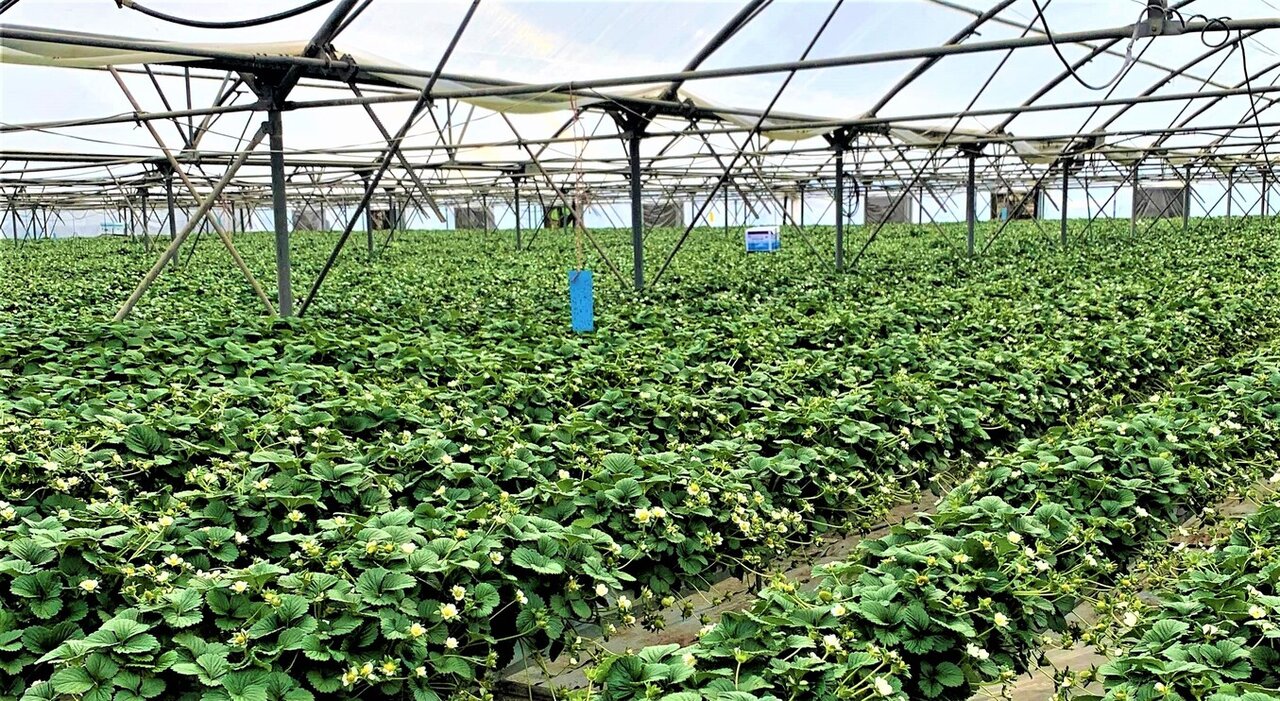25,000 hectares of land under greenhouse cultivation in Iran

TEHRAN- As announced by Iran’s deputy agriculture minister, 25,000 hectares of land are under greenhouse cultivation in the country.
Emphasizing the necessity of developing greenhouse cultivation in the country, Mohammad-Mehdi Boroumand, the deputy agriculture minister for horticulture affairs, stated that now the area of greenhouses has increased to 25,000 hectares and by using the capacities of the private sector and the government, efforts are being made to make policies in this area towards the creation of large-scale greenhouses.
Saying that the country was dependent to build structures for the establishment of greenhouses, he underlined, “At the present time, we can provide the knowledge and technique in this due to other countries.”
In recent years, the water crisis has caused serious challenges in Iran’s agriculture sector.
To solve this problem, several solutions, including the implementation of pressurized irrigation project and greenhouse cultivation, have been emphasized by experts and officials in this sector.
Iranian Agriculture Ministry’s Greenhouse Development Program is one of the priority projects of this ministry which aims at increasing productivity, efficiency, and water consumption management in the agriculture sector.
The program was approved in the Iranian calendar year 1395 (ended on March 20, 2017) under the framework of the National Resistance Economy Plan.
The development of the country’s agricultural parks and greenhouses not only is going to create new job opportunities but also increases the country’s non-oil exports and helps preserve the environment and the national water and soil resources.
Due to the growing need of the market for flowers and ornamental plants, as well as off-season vegetables and summer crops, greenhouse cultivation has become one of the most profitable agricultural sectors today.
Cultivation in the controlled space of the greenhouse will have an average of 10 times higher yield per unit area than outdoor cultivation due to suitable environmental conditions.
For example, in the case of cucumber, each square meter in the greenhouse will have a production capacity of 20 kilograms of cucumber, while compared to outdoor production, the production capacity of one square meter of arable land will be much lower and about two kilograms.
Significant reduction in water consumption in modern greenhouses is in fact the major advantage of greenhouse cultivation.
In greenhouse cultivation, due to the closed environment, water loss through various evaporation ways is greatly reduced. Also, through mechanized irrigation methods such as irrigation canvas and irrigation tape, water consumption is minimized.
Increased control over pests, weeds and diseases is the other advantage of greenhouse cultivation.
In greenhouse cultivation, due to accurate monitoring and control of pests and diseases, especially the use of biological control methods and a sharp reduction in the use of chemical pesticides, we will see an increase in product quality, that will lead to the popularity of the product in the market and increase export capability.
As a result, along with preserving the soil and environment, we will see good foreign currency income.
The director of the Agriculture Ministry’s Greenhouse Development Program has previously stated that 3,200 hectares of greenhouses is targeted to be established in the country in the current Iranian calendar year (ends on March 20).
Darioush Salempour said that according to the plans and coordination made with the agriculture departments of the provinces, 3,200 hectares of greenhouses will be created in the country, and 686 hectares will be improved and renovated this year.
Greenhouse development in each of the provinces will be done based on climatic conditions and capacities, infrastructure for access to facilities, manpower status, proximity to the target consumer market and export markets, population, development history and investment in this field, he further explained.
This year, based on the plans and also the mentioned factors, provinces such as Sistan-Baluchestan, Fars, Kerman (south of the province), Tehran, East Azarbaijan, Ardebil, Bushehr, Khorasan Razavi, Hormozgan, Yazd and Isfahan will be given priority in the development of greenhouses, the official added.
The director of the Agriculture Ministry’s Greenhouse Development Program further underlined that despite economic conditions caused by the coronavirus pandemic, sanctions against the country, and limited credit facilities, 1,510 hectares of new greenhouses, equivalent to 50 percent of the development goal, was established, and 597 hectares of greenhouses, equivalent to 86 percent of the notified plan, was renovated in the past year.
“We try to achieve the maximum goals set in the greenhouse sector this year by coordinating with the provinces, allocating timely and cheap facilities and providing incentives”, the official added.
He also named elimination of production barriers, expansion of government and legal protections, facilitation of licensing conditions, payment of bank facilities, shortening of investment process, empowerment of implementers and experts by holding training courses, and holding specialized exhibitions as some of the programs of the ministry’s Horticulture Affairs Department for greenhouse development.
In mid-February, Agriculture Minister Javad Sadati-Nejad said that currently, there are about 25,000 hectares of greenhouses in Iran, and another 125,000 hectares of greenhouses are needed to be created in the country.
Referring to the country's need to create greenhouses on 125,000 hectares of land, the minister said: “To create this level of greenhouses, we need the support of investors and people, and the government also helps them in the field of facilities.”
Referring to the president's emphasis on the transfer of vegetable cultivation from open spaces to greenhouses, Sadati-Nejad added: “To implement this and boost water efficiency, we must have 150,000 hectares of greenhouses in the country.”
“We are trying to support investors in the creation of greenhouses; in this regard, a working group has been created so that we can lighten and cheapen greenhouse structures, and by locating them in the country, we can identify suitable climatic capacities that match the ecology of the region”, the official further stated.
MA/MA
Leave a Comment